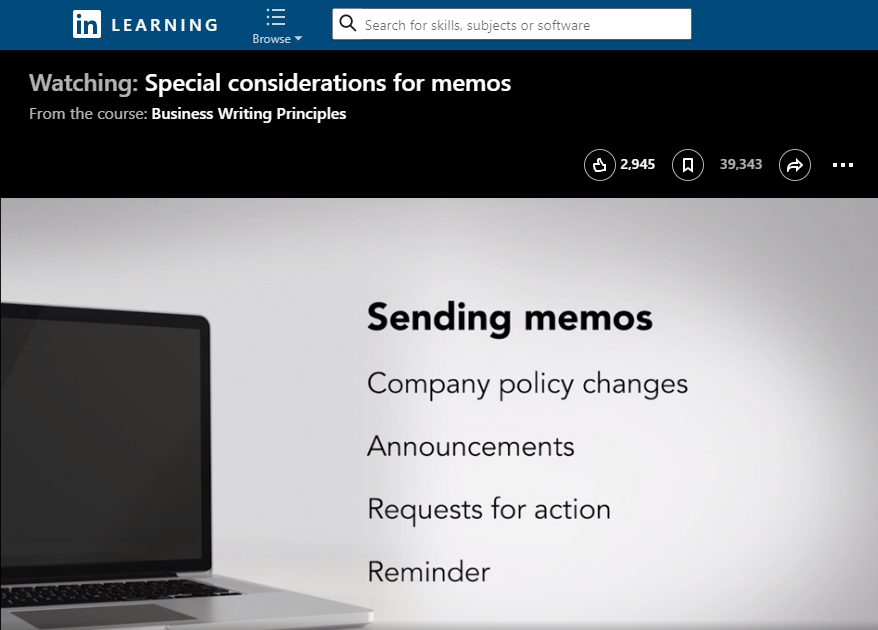When you are not writing letters or email messages in the workplace, you will often find yourself writing memos. Today’s post reviews the characteristics of memos, which are typically internal messages sent to coworkers within your organization.
Like all correspondence, memos should be clear and well-organized with document design features that help readers find the information that is important to them. You can use headings, bulleted lists, and numbered lists to make details stand out. See the advice in Markel & Selber, Chapter 9 to for specific details.
In addition to general memos, you may find that you use specific memos in the workplace. For instance, you might use a memorandum of understanding (MoU) as a kind of contract, where you and other parties agree to specific terms. MoUs are often created by a lawyer or the organization’s legal department. If you write such a memo yourself, it will probably need to go through a legal review before it is sent to the recipient.
For details on the basic memos you are likely to write, watch the Lynda.com video Special Considerations for Memos (3m52s) to learn more. The video is free with your VT login. Follow these instructions to login:
After watching the video, consider how the information on memos compares to the textbook or talk about how it compares to your own experience with correspondence.
